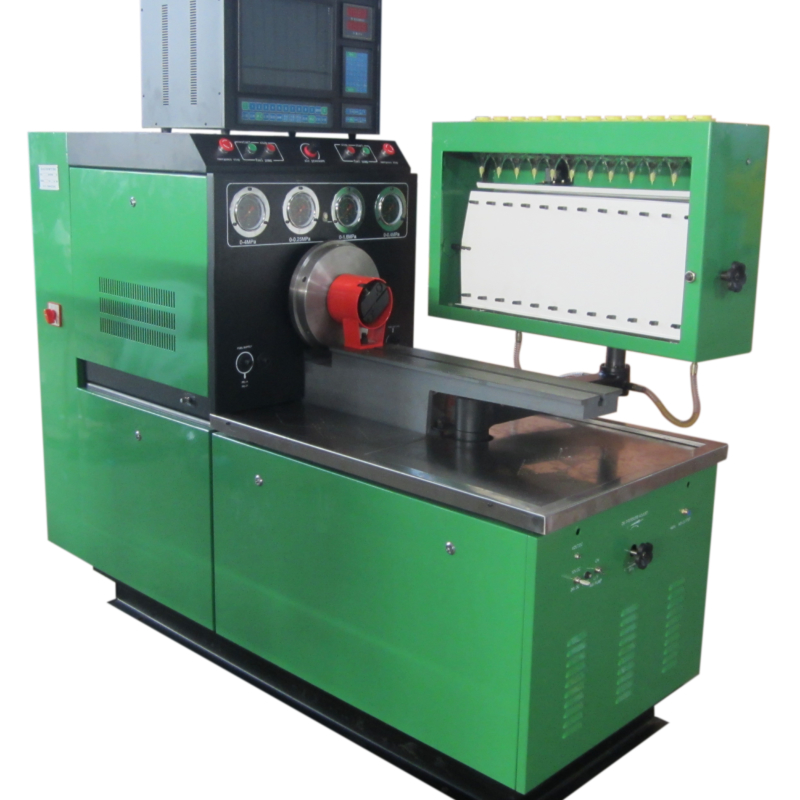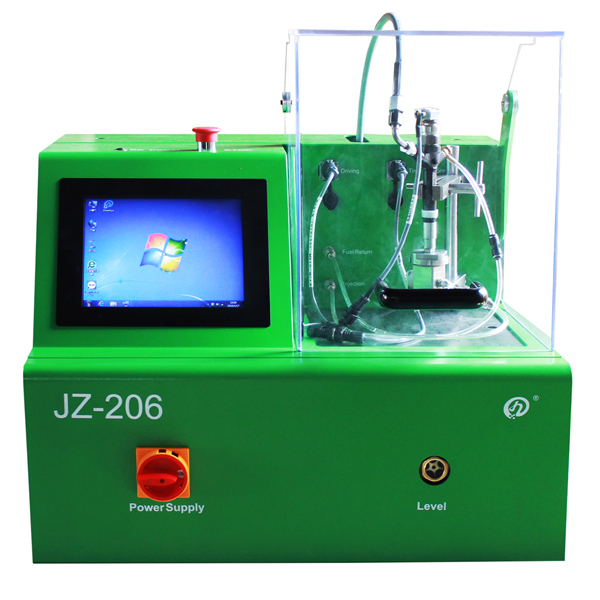How To Test A Diesel Injection Pump – 2
How To Test A Diesel Injection Pump ?
2 Operation requirements of the diesel pump test bench
2.1 Installation of the tested high pressure pump on the test bench
The high pressure pump is fixed to the table rail by special clamping devices. The front end of the high pressure pump is connected to the test bench universal joint via a coupling. When installing, it must be ensured that the high-pressure pump camshaft is coaxial with the test-table drive shaft, which can be achieved by installing a special pad between the high-pressure pump and the guide rail. After initial fixing, turn the universal joint dial 1 to 2 turns. When it feels smooth, tighten the large bolt and nut. After installation, the high-pressure pump should run smoothly and reliably, be firm and reliable, and have no jitter and looseness.
2.2 Start and stop of the diesel pump test bench
The pump test bench is connected to the three-phase power supply, and the speed control handle is turned to make it in the zero position. When the motor start button (green) is pressed, the motor can be started. When stopping, turn the speed control handle to reduce the dial speed to zero first, then press the stop button (red) to avoid stopping at high speed. The test bench will be damaged and an accident will occur at the next start-up.
2.3 Speed adjustment of the injection pump test bench
According to the required speed and direction, select the gear position of the gearbox, and turn the speed control handle to change the speed. The greater the deflection angle of the speed control handle, the higher the speed.
2.4 Pressure regulation of the fuel system for the injection pump test bench
The pressure of the fuel system is regulated by a pressure regulator. When the handwheel is rotated clockwise, the pressure can be adjusted within the range of 0 to 0.6 MPa, and the pressure can be adjusted within the range of 0 to 6 MPa when rotated counterclockwise. The pressure diesel fuel is sent from the fuel supply joint of the pump test bench to the high pressure pump under test through the fuel pipe.
2.5 fuel temperature control of the diesel pump test bench
When the fuel temperature is lower than 40 °C, turn the heating valve handle clockwise to increase the fuel temperature. When the fuel temperature reaches 40 °C, immediately close the heating valve to stop heating.
3 Maintenance and maintenance of the pump test bench
(1) In order to ensure the test accuracy of the pump test bench, the opening pressure of the standard injector should be checked frequently, which should be 17. 5 MPa; the uniformity of the standard injector should be checked regularly. If there is a difference, the opening pressure can be adjusted. Correction, if not correct, replace the standard injector.
(2) The test fuel must pass through the light diesel fuel which has been precipitated for more than 48 hours. It is necessary to replace the new fuel after commissioning 500 injection pumps or 400 hours of operation of the test bench. When changing diesel fuel, use kerosene to clean the fuel tank and filter. 30# or 46# turbine fuel is required for the transmission case and the hydraulic continuously variable transmission. Inject 40# mechanical oil or 150# mechanical oil into the gearbox. The oil level should not be lower than the oil-filled elbow, and it should be replaced every 400 h or half a year. The bearings in the tachometer seat should be lubricated with mechanical oil or turbine oil. When refueling, remove the mechanical watch and inject lubricant from the tachometer seat.
(3) Before starting of the pump test bench, it is best to use the lever to rotate the dial until the motor and fuel supply pump rotate at the same time, and then start the operation.
(4) Do not shift gears during the operation of the pump test bench or start the test bench at high speed, otherwise the hydraulic continuously variable transmission or gear will be damaged. When operating the speed control handle, slowly increase or decrease the speed, and do not operate quickly. When stopping, adjust the speed to zero to avoid damage to the transmission system and affect the service life of the injection pump test bench




Leave a Reply
Want to join the discussion?Feel free to contribute!